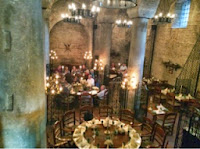Footsteps of Paul

Before our final dinner together in a sixth century cistern restaurant, we gave thanks for a wonderful 3,200 mile (San Diego to New York) pilgrimage through Turkey, exploring the footsteps of apostles Paul and John, learning about the context of the early church and the impact of the early church fathers. It was a very special meal of Turkish food, laughter and stories. Pilgrimage in community is a powerful experience. We marked our days with prayer, scripture, sharing insights, traveling light, open to what God has in store for us and acknowledging those times of providence where we just happened to be there at just the right time and place. Amy and I thought it was awesome to be in Istanbul for our third time -- ferrying up the Bosphorus, crossing under the Sea of Marmara by metro, walking through the crowded streets, marveling at the sights lit up at night and sampling the baklava and dolma mussels. I love introducing people to Istanbul because it is such a...



